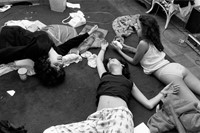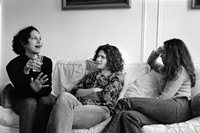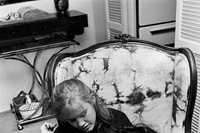In Karen Marshall’s epic new photo book, Between Girls, she documents a group of New York teenagers as they grow up and experience love, loss and heartache
“I believe that there is a language that women share that is often hard to describe,” says Karen Marshall in the introduction of her epic new photo book Between Girls. It is a language that the New York photographer has been attempting to translate for the last three decades, documenting a group of young women as they experience life’s euphoric highs and devastating lows.
The project began in 1985, when Marshall began photographing a charismatic teenager called Molly Brover. After being introduced to the 16-year-old’s friends, she was welcomed into the fold and given the opportunity to shoot their everyday interactions – from the cosy chaos of a sugar-fuelled sleepover, to the hushed, solace-seeking whispers of a New York subway journey. “My intention was to look at the emotional bonding that happens between girls at age 16, and work on a documentary project about the emblematic relationships that happen between them,” explains Marshall.
However, months after starting the project, tragedy struck. While on summer vacation in Cape Cod, Marshall’s principal protagonist, Brover, was killed in a car accident. The photographer was shattered by the news – but resolved to keep the project going. For the next 30 years, Marshall would periodically return to Brover’s original friendship group, taking photos as their relationships morphed and mutated; growing closer and further apart. The result is Between Girls, out now on Kehrer Verlag, which collates hundreds of photographs and related ephemera, as well as hours of audio interviews and old school video footage. Here, she explains the story behind it all.

“In 1985, when I shot this project, I was an emerging photographer trying to get into long-form storytelling. Prior to that, I had been doing environmental street portraits with a 1950s Rolleiflex camera, but I was losing interest in looking at public space. I was thinking about documentary photography, and stories that were more psychological. I also felt that there was a lot of photography at the time about conflict – stories about how we don't get along, or how we’re at war with each other. And I was like, well, how about if I use my camera to look at the places where we do get along?
“I came of age in the 1970s when the women’s movement was really strong, and everyone was looking at what it meant to be a woman. It deeply influenced me, but by 1985 nobody was really talking about that anymore. There wasn’t much work on girls coming of age at that time: now you have tons of that kind of content, but there was very little out there during the 80s. When people did talk about teenage girls, they talked about either girls under the poverty line or the super-rich – nothing in between.
“Once I decided on this project, I started asking everyone I knew to try and find some girls. I eventually found the then 16-year-old Molly, who had been a babysitter for some friends, and she hooked me up with all of her friends.
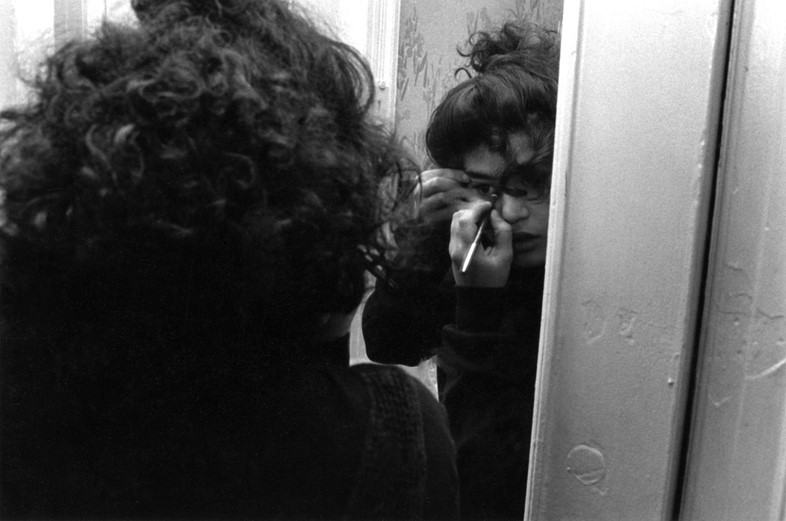
“Molly was a giant personality. She was extremely exuberant; very social and creative. She was somebody you notice as soon as she walks into a room, which helped her in front of the camera. The first time I photographed her, it was a Saturday afternoon, and she was with her friend Jen. I knew immediately when I met them that there was something there. It was this great combination of them enjoying talking to me, but also allowing me to be a fly on the wall while they just continued doing what they were doing. There’s a universality that girls have with each other at a certain age, and it’s really hard to explain what that is. But I thought, photographically, maybe I could try.
“10 months into the project and I really had no idea where it was going to go. But then Molly was killed in a road traffic accident. It was a very bizarre moment. I realised that Molly would remain 17, and the rest of her friends would become women. But I didn’t want to stop photographing them, so it was hard. I didn’t have quite as much access during their senior year, and they were not hanging out with each other as much because Molly’s death was very painful for them. When they were all back in the city, after that summer, there was great sadness. I saw them occasionally after that but it was hard, because if they saw me, they thought of Molly. And even to this day, that’s still part of it.
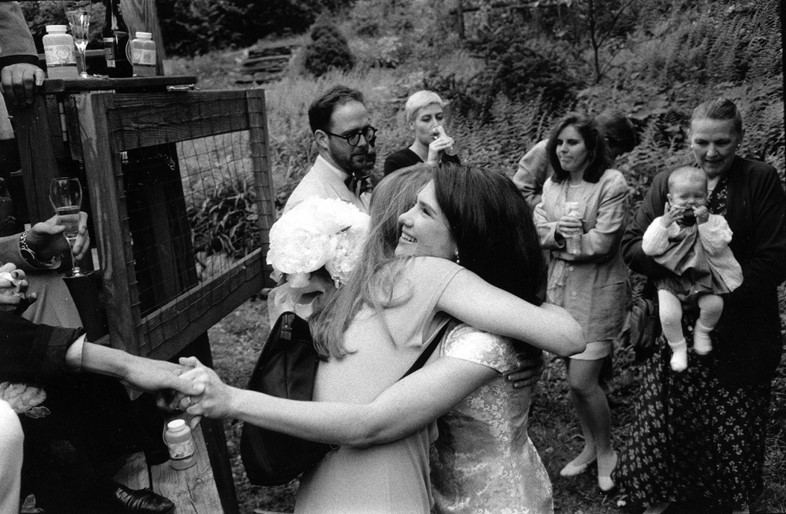
“They were very articulate women at such a young age, and that their voices were really important. They really had a lot to say. A friend of mine was a sound engineer at a radio station and she proposed the idea that we record them. So I did: I asked them about Molly, and got different responses. There are times where certain people didn't even want to talk to me because – they later told me – it was still so devastating for them. But I carried on photographing them, and interviewing them, for years after.
“30 years later, in the fall of 2015, I stopped working on the project. It felt like perfect timing. They were all on the other side of their 40s, and – while life is still gonna make you change – you are who you are at that age. You’re grounded. 30 years was enough. People keep saying, ‘are you done? Are you done?’ But this book is the project. And yes, if at some point I end up having some other exhibition, there might be some other little extra something added. But for now, it’s finished.”
Between Girls by Karen Marshall is out now, and published by Kehrer Verlag


